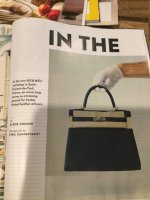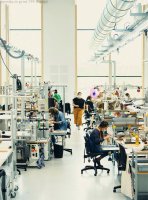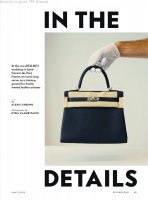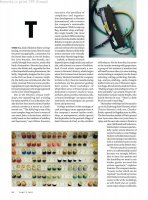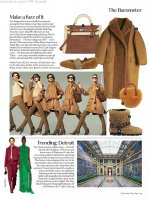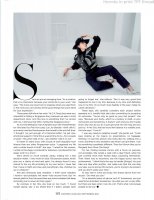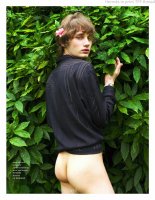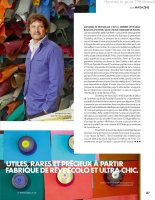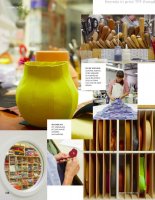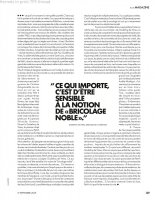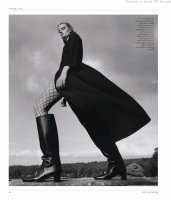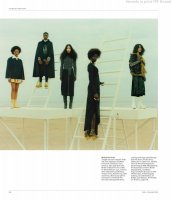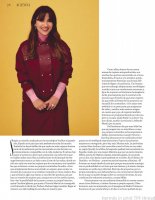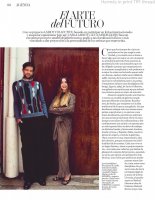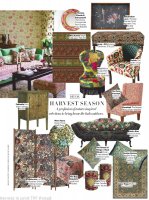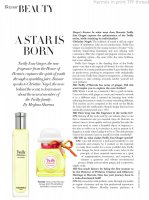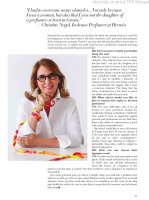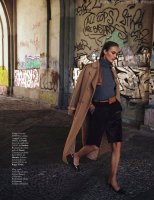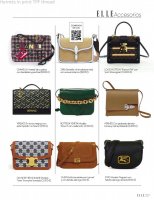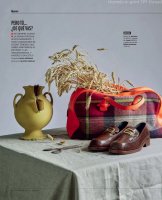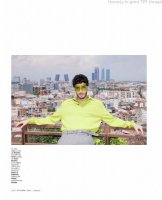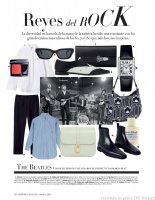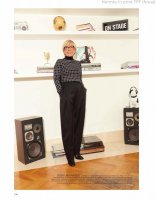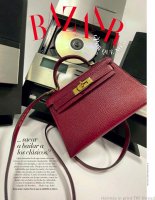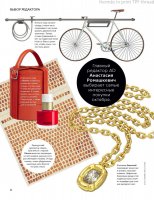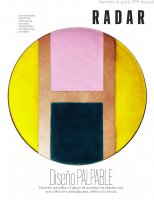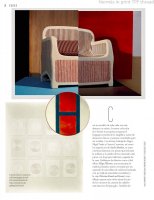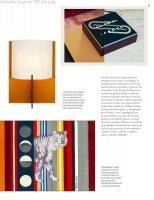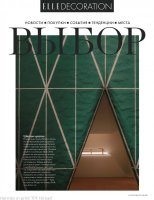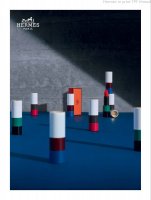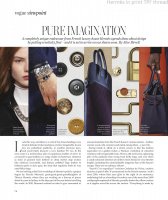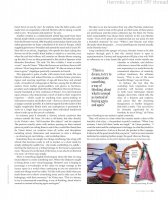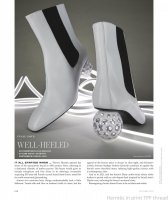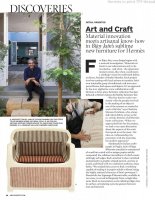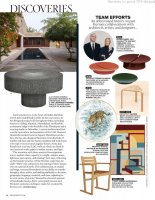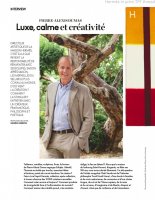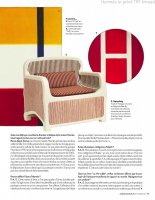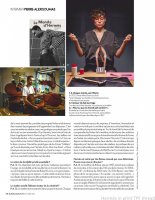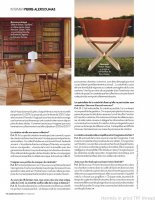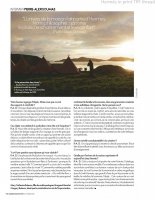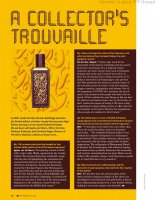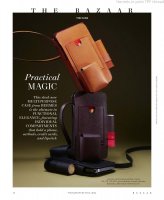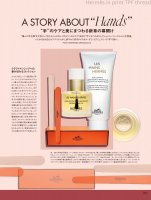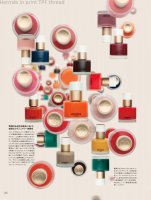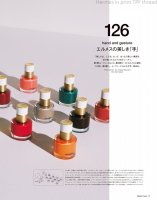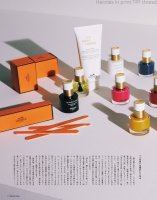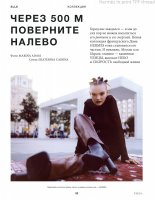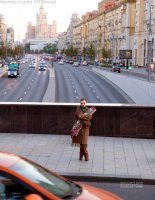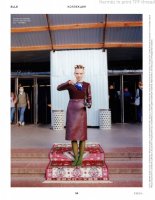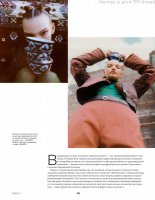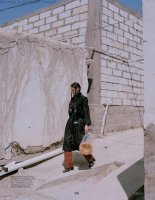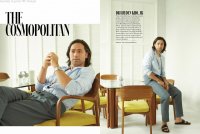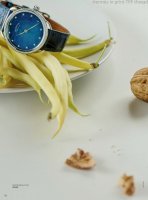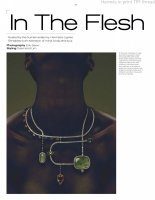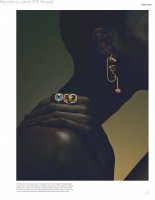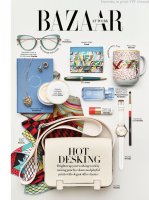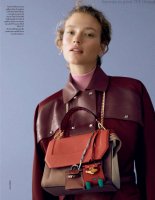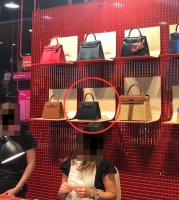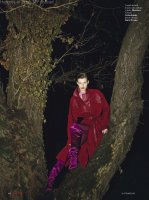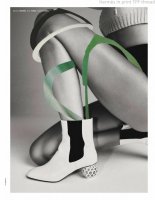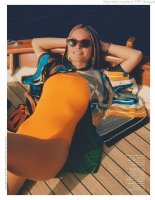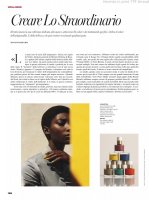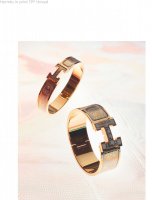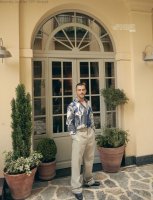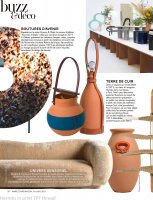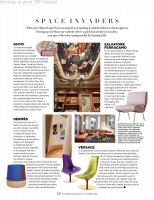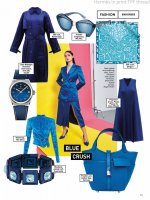Hermès Inaugurates Leather Goods Workshop in France
The French luxury goods firm is struggling to keep pace with soaring demand for its handbags.

The newly unveiled Hermès leather goods workshop in Saint-Vincent-de-Paul, France.
François Coquerel/Courtesy of Hermès
SAINT-VINCENT-DE-PAUL, France — Hermès has a message for customers unhappy about having to wait for its highly coveted handbags: it’s going as fast as it can.
The French luxury house on Friday inaugurated its 19th leather goods workshop in France as it continues to expand production capacity to keep pace with seemingly boundless demand for models ranging from the classic Birkin to newer releases like the 24/24.
Its first production site in the department of Gironde in southwest France employs 200 people, of which 50 have moved from other workshops nationwide to share their knowhow, as part of the company’s ongoing training program for the artisans who produce its bags by hand exclusively in France.
The site will eventually house 280 people, and is part of an ongoing expansion program with three additional units already in the pipeline, said Guillaume de Seynes, managing director of Hermès.
“We continue to see very strong demand. That’s why we continue to invest,” he told WWD in an interview on the eve of the inauguration.
Demand for leather goods and saddlery, which account for half of the company’s revenues, has been soaring despite the coronavirus pandemic, which temporarily halted production sites last year and shuttered stores worldwide.
In the first half of 2021, the division’s sales were up 62.9 percent at constant exchange rates versus 2020, and rose 24.9 percent versus 2019, considered a more reliable benchmark due to the disruptions that skewed last year’s figures.
In the last 10 years, Hermès has opened on average one new production site a year, hiring between 400 and 500 people annually for its leather goods production activities alone, said de Seynes. It employs more than 5,600 artisans in France, including more than 4,000 workers specialized in saddlery and leather goods.
The company has 90 people dedicated to training new recruits, and this week unveiled the creation of an in-house apprenticeship training center that will issue a state-endorsed national diploma in leatherworking.

Inside the newly unveiled Hermès’ Maroquinerie de Guyenne in Saint-Vincent-de-Paul, France.
François Coquerel/Courtesy of Hermès
Despite this, Hermès can’t keep up with demand, resulting in famously long waiting lists, and recent reports of several lone disgruntled customers in China protesting in front of stores where they were unable to secure a handbag.
In particular, Chinese customers have complained about having to spend money on smaller items in the hope of being allowed to buy more in-demand products, a practice known as “peihuo.”
“This is not a company-endorsed policy,” said de Seynes. “What is true is that most markets have to manage scarcity. That means managing waiting lists, and sometimes managing disappointment and long wait times.”
Nonetheless, Hermès does not plan to accelerate its manufacturing expansion, saying it is growing as fast as it can, considering the 15 months it takes to train new hires, and an industrywide shortage of skilled workers.
“It’s very frustrating for us not to be able to satisfy everybody. At the same time, we’re not doing it to create an artificial market. We’re doing it because we’re not going to lower our quality standards, which are based on an artisanal production model that is growing as fast as it can,” said de Seynes.
“It’s not about investing in machines, in production chains, and pushing a button. We are making a statement about the care we put into the quality of the object,” he added.
Hermès store buyers from each region submit their handbag requests, with products allocated according to the strengths of the various geographic areas. “It’s not a lucky draw,” said de Seynes.
“Some markets want to bet more heavily on novelties, because we introduce two or three new models with each collection, while others are less into that approach — that’s the freedom of our buyers. It’s a bit of a balancing act, but the process is quite well established internally,” he added.
Each bag is produced by a single artisan and requires between 15 and 20 hours of work, meaning they can only churn out two to three bags a week. As a result, no two products are alike, noted Axel Dumas, chief executive officer of Hermès.
“It’s always our ambition to create something unique. No two of our stores are the same, no two of our leather goods workshops are alike, and all artisans are different,” he said in a speech on Friday to the staff of the workshop, who dressed in green for the occasion.
Dumas recalled this caused some hiccups when Hermès first started producing straps for the Apple Watch. “Not one of them made it through quality control,” he said. “They told us, ‘They’re all different.’ And we had to explain to them that this was normal, since they were handstitched, and everyone stitches differently.”
 Artisans at the Hermès leather goods workshop in Saint-Vincent-de-Paul, France.
Artisans at the Hermès leather goods workshop in Saint-Vincent-de-Paul, France.
Courtesy of Hermès
The Maroquinerie de Guyenne building in Saint-Vincent-de-Paul, some 30 minutes north of Bordeaux, is set on a 13.8-acre site previously used to store backfill. The wood and concrete structure was designed by architect Patrick Arotcharen, known for his environmentally conscious approach.
The eight workshops, specialized in producing Kelly and 24/24 bags, take advantage of natural northern light to allow the artisans to execute their precise gestures, which include cutting large leather hides, saddle stitching and assembling bags, all to a steady beat of hammers.
Over the last 15 years, Hermès has acquired a number of tanneries to ensure the quality of its leather supply. “The tannery division works closely with cattle breeders, especially in France, to find ways to improve the hides either by supplying vaccines, or sharing best practices. It’s a permanent challenge,” said de Seynes.
Still, despite its splashy announcement earlier this year that it was launching a bag combining leather and canvas with mycelium, a lab-grown mushroom-derived material, Hermès is not ready to turn its back on leather yet.
“We have an in-house team looking at a number of leads in terms of other new materials, but it’s important to emphasize that these materials must meet our quality requirements in terms of appearance, regularity, resistance and quality over time,” said de Seynes.
“While [mycelium] appears rather promising, we remain very cautious about when we will really be able to produce some bags using this material,” he added. “We don’t want them to fall apart after three years.”
While Hermès has offered canvas and leather bags since the 1930s, leather has the advantage of being easier to repair. “Leather for us is an absolutely essential and magnificent material because it’s flexible, resistant and lasting, and it’s a subproduct [of the food industry],” de Seynes explained.
That includes exotic leather, despite an ongoing campaign by animal rights group PETA, which staged events in front of Hermès stores in New York, Paris and London on Wednesday following the release of new video footage documenting practices in crocodile farms in Australia.
De Seynes declined to comment on the protests, but reiterated that Hermès adheres to the highest industry standards for both its own farms and its suppliers. “We have them audited,” he said. “As much as possible, we avoid animal suffering during the different farming processes.”
The company has launched a diagnosis of its biodiversity footprint, and also has a number of scientific partnerships regarding the sustainability of its production of ostrich leather, crocodile leather and silk, and its water footprint.
It planted more than 100 trees to re-green the Guyenne site. Solar panels supply more than 40 percent of its electricity, supplemented by LED lighting, and the building also has a rainwater recovery system.
Hermès plans to open a site in Louviers, in the Normandy region, next year, to be followed by a workshop in the Ardennes in 2023 and a second site in Auvergne the following year.
Still, don’t expect to be able to buy a Birkin or Kelly bag online anytime soon. “It’s not on the cards in the short or medium term,” said de Seynes.

 wwd.com
wwd.com
The French luxury goods firm is struggling to keep pace with soaring demand for its handbags.

The newly unveiled Hermès leather goods workshop in Saint-Vincent-de-Paul, France.
François Coquerel/Courtesy of Hermès
SAINT-VINCENT-DE-PAUL, France — Hermès has a message for customers unhappy about having to wait for its highly coveted handbags: it’s going as fast as it can.
The French luxury house on Friday inaugurated its 19th leather goods workshop in France as it continues to expand production capacity to keep pace with seemingly boundless demand for models ranging from the classic Birkin to newer releases like the 24/24.
Its first production site in the department of Gironde in southwest France employs 200 people, of which 50 have moved from other workshops nationwide to share their knowhow, as part of the company’s ongoing training program for the artisans who produce its bags by hand exclusively in France.
The site will eventually house 280 people, and is part of an ongoing expansion program with three additional units already in the pipeline, said Guillaume de Seynes, managing director of Hermès.
“We continue to see very strong demand. That’s why we continue to invest,” he told WWD in an interview on the eve of the inauguration.
Demand for leather goods and saddlery, which account for half of the company’s revenues, has been soaring despite the coronavirus pandemic, which temporarily halted production sites last year and shuttered stores worldwide.
In the first half of 2021, the division’s sales were up 62.9 percent at constant exchange rates versus 2020, and rose 24.9 percent versus 2019, considered a more reliable benchmark due to the disruptions that skewed last year’s figures.
In the last 10 years, Hermès has opened on average one new production site a year, hiring between 400 and 500 people annually for its leather goods production activities alone, said de Seynes. It employs more than 5,600 artisans in France, including more than 4,000 workers specialized in saddlery and leather goods.
The company has 90 people dedicated to training new recruits, and this week unveiled the creation of an in-house apprenticeship training center that will issue a state-endorsed national diploma in leatherworking.

Inside the newly unveiled Hermès’ Maroquinerie de Guyenne in Saint-Vincent-de-Paul, France.
François Coquerel/Courtesy of Hermès
Despite this, Hermès can’t keep up with demand, resulting in famously long waiting lists, and recent reports of several lone disgruntled customers in China protesting in front of stores where they were unable to secure a handbag.
In particular, Chinese customers have complained about having to spend money on smaller items in the hope of being allowed to buy more in-demand products, a practice known as “peihuo.”
“This is not a company-endorsed policy,” said de Seynes. “What is true is that most markets have to manage scarcity. That means managing waiting lists, and sometimes managing disappointment and long wait times.”
Nonetheless, Hermès does not plan to accelerate its manufacturing expansion, saying it is growing as fast as it can, considering the 15 months it takes to train new hires, and an industrywide shortage of skilled workers.
“It’s very frustrating for us not to be able to satisfy everybody. At the same time, we’re not doing it to create an artificial market. We’re doing it because we’re not going to lower our quality standards, which are based on an artisanal production model that is growing as fast as it can,” said de Seynes.
“It’s not about investing in machines, in production chains, and pushing a button. We are making a statement about the care we put into the quality of the object,” he added.
Hermès store buyers from each region submit their handbag requests, with products allocated according to the strengths of the various geographic areas. “It’s not a lucky draw,” said de Seynes.
“Some markets want to bet more heavily on novelties, because we introduce two or three new models with each collection, while others are less into that approach — that’s the freedom of our buyers. It’s a bit of a balancing act, but the process is quite well established internally,” he added.
Each bag is produced by a single artisan and requires between 15 and 20 hours of work, meaning they can only churn out two to three bags a week. As a result, no two products are alike, noted Axel Dumas, chief executive officer of Hermès.
“It’s always our ambition to create something unique. No two of our stores are the same, no two of our leather goods workshops are alike, and all artisans are different,” he said in a speech on Friday to the staff of the workshop, who dressed in green for the occasion.
Dumas recalled this caused some hiccups when Hermès first started producing straps for the Apple Watch. “Not one of them made it through quality control,” he said. “They told us, ‘They’re all different.’ And we had to explain to them that this was normal, since they were handstitched, and everyone stitches differently.”

Courtesy of Hermès
The Maroquinerie de Guyenne building in Saint-Vincent-de-Paul, some 30 minutes north of Bordeaux, is set on a 13.8-acre site previously used to store backfill. The wood and concrete structure was designed by architect Patrick Arotcharen, known for his environmentally conscious approach.
The eight workshops, specialized in producing Kelly and 24/24 bags, take advantage of natural northern light to allow the artisans to execute their precise gestures, which include cutting large leather hides, saddle stitching and assembling bags, all to a steady beat of hammers.
Over the last 15 years, Hermès has acquired a number of tanneries to ensure the quality of its leather supply. “The tannery division works closely with cattle breeders, especially in France, to find ways to improve the hides either by supplying vaccines, or sharing best practices. It’s a permanent challenge,” said de Seynes.
Still, despite its splashy announcement earlier this year that it was launching a bag combining leather and canvas with mycelium, a lab-grown mushroom-derived material, Hermès is not ready to turn its back on leather yet.
“We have an in-house team looking at a number of leads in terms of other new materials, but it’s important to emphasize that these materials must meet our quality requirements in terms of appearance, regularity, resistance and quality over time,” said de Seynes.
“While [mycelium] appears rather promising, we remain very cautious about when we will really be able to produce some bags using this material,” he added. “We don’t want them to fall apart after three years.”
While Hermès has offered canvas and leather bags since the 1930s, leather has the advantage of being easier to repair. “Leather for us is an absolutely essential and magnificent material because it’s flexible, resistant and lasting, and it’s a subproduct [of the food industry],” de Seynes explained.
That includes exotic leather, despite an ongoing campaign by animal rights group PETA, which staged events in front of Hermès stores in New York, Paris and London on Wednesday following the release of new video footage documenting practices in crocodile farms in Australia.
De Seynes declined to comment on the protests, but reiterated that Hermès adheres to the highest industry standards for both its own farms and its suppliers. “We have them audited,” he said. “As much as possible, we avoid animal suffering during the different farming processes.”
The company has launched a diagnosis of its biodiversity footprint, and also has a number of scientific partnerships regarding the sustainability of its production of ostrich leather, crocodile leather and silk, and its water footprint.
It planted more than 100 trees to re-green the Guyenne site. Solar panels supply more than 40 percent of its electricity, supplemented by LED lighting, and the building also has a rainwater recovery system.
Hermès plans to open a site in Louviers, in the Normandy region, next year, to be followed by a workshop in the Ardennes in 2023 and a second site in Auvergne the following year.
Still, don’t expect to be able to buy a Birkin or Kelly bag online anytime soon. “It’s not on the cards in the short or medium term,” said de Seynes.

Hermès Inaugurates Leather Goods Workshop in France
Hermès is ramping up the pace of leather goods production with a new site in France, but still can't keep up with soaring demand.




